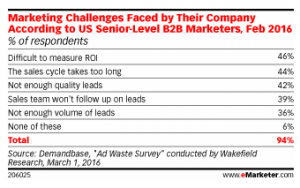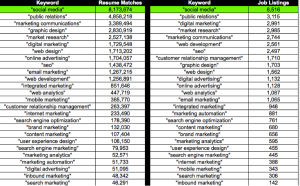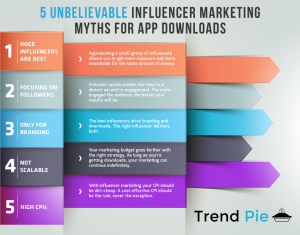In today’s digital age, it’s important to have a holistic view of prospects and customers and the ways they interact with your brand. That way, you can communicate with them in the most engaging, relevant, and consistent way possible—across all devices, platforms, and channels.
One of the best ways to do this is through identity resolution.
What Is Identity Resolution?
Identity resolution is the process of identifying your prospects/customers by the devices they use, the browser behavior they exhibit, and the online activities they partake in—and then tying that behavior to a unique identity in order to create a holistic picture of your prospects/customers and where they are on the Buyer’s Journey.
Identity resolution allows you to create a highly personalized user experience with your brand and a higher return on your investment.
If you’re interested in gaining further insight into identity resolution, why you may need it, how to utilize it, and different types of identity resolution software, then keep reading.
Do You Need Identity Resolution?
In a single day, it’s possible for one person to be on three devices and a half dozen platforms, creating multiple opportunities for touch points with your brand.
How can we, as marketers, pull together a full picture of our customers and deliver the right messaging at the right time on the right platform? Identity resolution, along with customer data management platform technology, helps us do this by creating a “segment of one,” where each individual customer gets their own personalized brand experience based on their characteristics, behavioral triggers, and where they are in the Buyer’s Journey.
For the customer-centric marketer, identity resolution is absolutely necessary to create a seamless and effective customer experience to better engage and retain customers.
Over the years, the digital landscape has grown in complexity with various devices, platforms, and channel landscapes (mobile phones, desktops, connected TVs); cookies have been slowly losing their usefulness. If you’re looking to navigate this complex territory and connect the dots between a user on a mobile device (for example) and that same user on a desktop computer, then you’ll want to take advantage of identity resolution.
What Are the Challenges Faced with Identity Resolution?
It’s pretty easy to say we all want to personalize the user journey—and the more personalized, the better—but with hundreds of thousands of consumers online searching for our product or service, we face some obstacles in creating one unified look at each of our individual customers. Those challenges include:
- A lack of detailed information about prospects and customers, such as their preferences, the type of device they use, or the platform they’re using
- Disconnected and fragmented profiles of the customers who are using more than one device, spend time on various platforms and channels, and utilize multiple touch points
- Marketing campaigns that are built around assumptions versus facts (e.g., cookies tell us which device a user is on, and we make assumptions regarding that user’s income level)
- Use of generic campaigns to engage prospects because of a lack of concrete data to identify individual customer preferences
- Loss of data on engagement numbers when a user switches devices
What Can Identity Resolution Software Do?
Are you treating each of your individual customers as a single individual and offering them a seamless and consistent marketing experience regardless of what device or platform they are on? Or are you still treating them as multiple, different individuals because you don’t have a holistic picture of who they are and where they are in the Buyer’s Journey?
Identity resolution software can solve for this by creating as complete a view as possible of all your individual prospects and customers by:
- Bringing all data from all sources (across all offline and digital channels) onto one platform to create one identity unique to each individual consumer, providing marketers with a single source of truth
- Establishing one holistic view of each individual customer and prospect that changes with changing behavior (such as a change of device, channel, platform, or address)
- Creating an identity graph with additional third-party data, such as other digital/device identities like email, username, phone number, IP address, and cookies
- Integrating into other adtech and martech systems to activate marketing campaigns
- Adhering to compliance regulations
Identity Resolution: Improving Your Marketing
By utilizing any one of these identity resolution platforms, marketers can (in near-real or real time) connect all of the millions of data points and records across all touchpoints where prospects and customers come into contact with a brand. For marketers, the top advantages of identity resolution include:
- Increased marketing efficiency: With streamlined communications across all touchpoints and devices and a lack of waste in overlaps, mistargeting, or duplication, marketers will save money on customer retention and acquisition.
- Higher ROI and conversion rates, thanks to having one central portal for all data integrated into marketing automation platforms.
- Improved campaign outcomes: Because decision-making is data-driven, campaign outcomes are improved by knowing the details of what worked, when it worked, and on what device it worked best.
- Better segmenting: Marketers are able to drive growth, conversion, retention, and loyalty at the macro (segment) and micro (individual) level with detailed data points that allow for improved segmenting and targeting.
A Note About Data Laws
In recent years, the legal landscape has gained a number of laws governing the use of personal data, such as the California Consumer Privacy Act (CCPA), Europe’s General Data Protection Regulation (GDPR), and other federal regulations. These laws are a strong incentive for marketers to invest heavily in first-party (not second- or third-party) data in order to operate with a user’s consent.
Digital & Social Articles on Business 2 Community
(58)
Report Post






